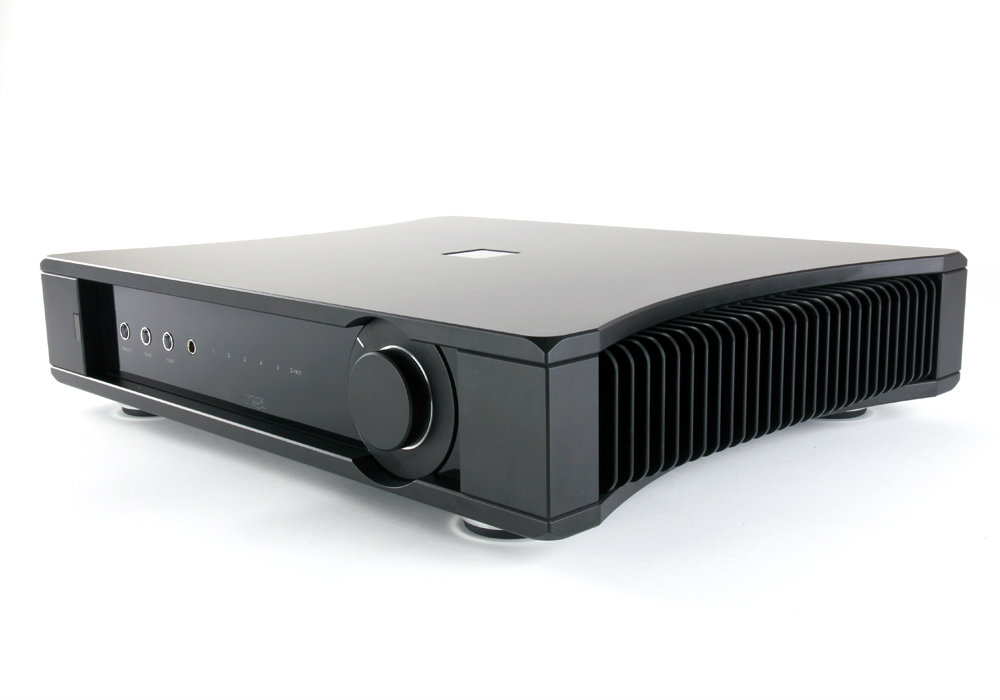REGA tells us that its latest stereo integrated amplifier, the Aethos, comes in a “brand new custom-designed case”. The “house” design cues, however, are discernible, which isn’t a bad thing – the all-black and glossy-faced Aethos certainly looks impressive.
Inside, this dual-mono design employs a custom-wound transformer and regulated supplies for the sensitive amplification and driver stages. The Aethos is rated to deliver 156 watts per channel into a six-ohm load, and 125 watts into eight ohms. You’re warned, though, not to drive it too hard over long periods.
As per the company literature, “as part of the design, we have included useful features such as the switchable direct input and preamplifier output, to enable the Aethos to be used in a wide combination of systems. The headphone socket has been integrated such that the speaker switching is performed by the output mute relay so as not to obstruct the signal path and degrade the sound quality.”

Other features of this fully discrete FET-based line amplifier are polypropylene capacitors throughout the signal path, K-Power reservoir capacitors, power amplifier regulated supply and a high-current output stage comprising four 160W Sanken output transistors per channel.
“The Aethos uses a high performance combined feedback and passive volume control plus line amplifier, which was originally developed for the Elex-R. Improvements have been made to the volume control and line amplifier stages in the Aethos with the discrete FET input operational amplifiers using the Linear Systems LSK389 FET and the well-respected RK27 ‘Blue Velvet’ potentiometer.

“The power amplifier used in the Aethos is an improved higher power version of the power amplifier used in the Elicit-R and Elex-R. The output amplifier was born after extensive research by our engineers to develop a low source impedance emitter follower Class-A driver stage. This is based around two complementary pairs of 160w Sanken Darlington output transistors.”

“Due to the nature of the Rega power amplifier circuit, we are able to run two complete output stages in parallel; this includes the output transistors, bias network and pre diver transistor, instead of paralleling just the output transistors as normally found. This ensures the 125-watt output is achieved with complete ease.”
Stay tune for a review in future.






Leave a Reply